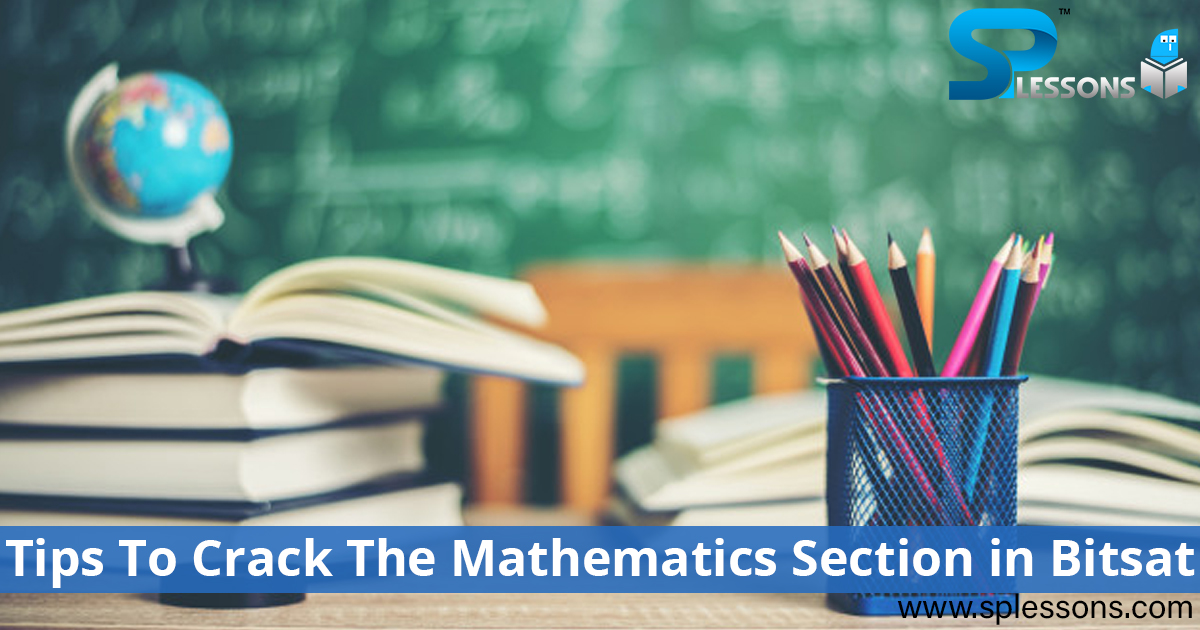 Introduction
Introduction
TIPS TO CRACK THE MATHEMATICS SECTION IN BITSAT
- BITSAT Mathematics section has 45 questions with a +3/-1 marking scheme.
- In addition to this, there are 4 more questions in the Bonus section.
- In total, the mathematics section can fetch you 147 marks out of 450 ( 486 effective maximum marks if the bonus questions are considered too).
- A good grip on mathematics’s concepts thus can lead to a big jump in one's marks.
 Tips
Tips
Here are some great tips to improve your score in BITSAT Mathematics!
1. SPEED is key, but so is accuracy
- The nature of the BITSAT exam is such that one is always on the toes while solving questions.
- 150 questions in 180 minutes is a lot to do.
- Hence, solving questions faster gives one an edge over others.
- Skip unnecessary steps and calculations in rough work. Maintain the equations formed in terms of variables for as long as practically possible instead of inputting numerical values straightaway. This helps in identifying errors in equations formed and in most cases, streamlines the question-solving procedure.
- Read the question attentively and carefully before committing to solving it. Sometimes, important information may be provided in the question which is easy to overlook.
- Take advantage of the MCQ format, some of the options may directly be eliminated due to the range and domain of the variables in trigonometry and algebra questions commonly found in BITSAT.
- Develop a habit of gauging a question in the first look, however, do not consider it unsolvable. If you have no idea what to do -> come back to it later, after doing every possible question you could solve, with a fresh mind.
Practice makes one perfect!
- Acing BITSAT’s mathematics section requires the rigorous practice of solving questions in an exam like environment.
- The best way to do this is to give mock tests in simulated exam environments at your home, solving questions without any disturbance for 3 straight hours, twice a week in the build-up to the exam is ideal.
BITSAT Maths has a lot of questions – 49!
- More or less every chapter in the syllabus gets a question – indirectly or directly, so covering the whole syllabus is very much necessary for good marks.
- Memorising and knowing how to apply the right formulae is extremely important in BITSAT. More than half of the questions are formulae based. This saves a lot of time and hence, gives a boost in terms of score.
- One is advised to start off with the NCERT books and cover all topics thoroughly. Creating a formulae list and doing sufficient applications of each formula is also recommended.
The D-Day factor and the BONUS QUESTIONS:
- BITSAT has 12 bonus questions, which you can attempt after having attempted the whole paper. These Bonus Questions can take your score to an altogether different level, so be patient in whatever time you have left and try to do maximum questions correctly.
- Patience is the requirement here, the level of the questions is NO DIFFERENT to the 150 you have attempted earlier.
- In the end, how well you are able to do in BITSAT largely depends on your level of preparation but also on what you do during the paper in the heat of the moment, and how many half-chances go your way, which brings luck into the game.
- But believing you can do well and not panicking during the paper goes a long way in ensuring you do well, as the fast-paced nature of the exam means even 5–10 minutes can mess up your score with fluctuations in order of 10–20 marks.
- Once again, solving more and more questions and practicing is something that cannot be emphasized and stressed on enough.




